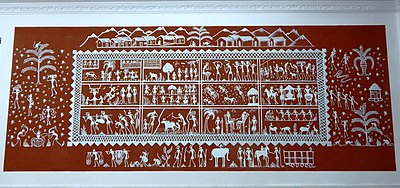
Idital or Edital is a form of Indian painting from the state of Odisha. It is a kind of Saura painting that was invented and is practiced by the Sora people who mostly live in Rayagada, Gajapati and Koraput districts of Odisha. The artisans paint Idital as a symbol of devotion to the tribal deity "Idital" or "Edital". Each piece of Idital painting contains symbols and signs and each one of them convey a distinct meaning. "Jodisum" and "Jananglasum" are two known Idital styles.